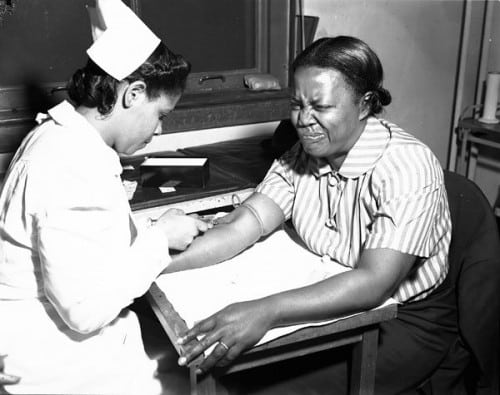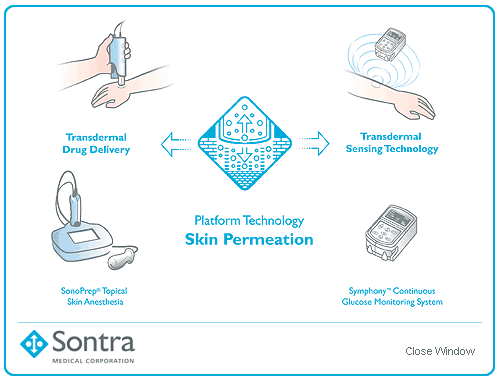The article was published with the approval of Scientific American Israel and the Ort Israel network.

Nachman Gershonovitz

Over the years, scientists have tried to develop painless injections, to ease the suffering of patients. If it's a one-time vaccination or blood test it's not so bad, but for patients who take injections every day, it's a real nightmare. Not to mention children (and even adults) who shy away from the injection to the point of hysteria.
Perfecting the injection technology has another goal, reducing the fear of using used needles, which can lead to the transmission of bacteria and diseases from person to person.
A short time ago we witnessed the theoretical recommendations of scientists to vaccinate entire countries against the bird flu virus in order to prevent the outbreak of an epidemic similar to smallpox. Injections without needles are an option that should be considered in such cases.
Here is a review of some notable developments in the field of injections.
The mosquito technique
Engineers from Kansai University in Osaka tried in 2002 to copy the sophisticated technique of stinging the mosquito which does not cause any pain.
The pain we feel after a mosquito bite is not really pain, it is more of a burning sensation and actually does not come from the bite itself. During the bite, the female mosquito secretes (the mosquito itself does not take part in the vampiric custom) a substance that prevents blood clotting, this allows it to suck a portion of fresh, non-clotted blood. This substance is the cause of swelling around the sting point, due to the sensitivity to the substance, while the sting itself is completely imperceptible.
After analyzing the mosquito's tools, the engineers came up with one clear conclusion: its bite does not hurt because its trunk is serrated.
Today's needle has a smooth and wide surface and when they come into contact with the skin and nerves, direct and continuous pain is caused. The mosquito's trunk pierces the skin in several tiny points, not in one thick point.
Research leader Dr. Seiji Oyaji and his team of engineers created a tiny needle 0.1 mm long and 1.6 mm in diameter. The walls of the needle are 5 microns (thousandths of a millimeter) thick. A XNUMX mm container is connected to the needle to contain the blood or fluids.
The team began experiments on pieces of rubber and silicone, which relatively reliably simulate the skin's reaction to a puncture. The needle turned out to be broken, which is actually the main problem that came up. According to Dr. Oyaji, if the needle breaks during a subcutaneous injection, the broken piece may enter the bloodstream and form a clot, and may even be fatal if it reaches the brain or heart.
At the time, Dr. Oyaji said that the needle he was trying to build could reach the market within five years. Well, we are waiting for him…
Without referring to the mosquito, a couple of other Japanese companies from Tokyo have developed the thinnest needle in the world. After a path of many obstacles until the creation of a needle from such a thin metallic foil.
Kansai University, Osaka, Japan.
Ultrasonic medicine
Robert Langer, a chemical engineer at MIT, along with some of his colleagues, developed SonoPrep in 2004, which was approved by the FDA, and brought a new line to the field of injections and needles.
The Sonoperap, a small battery-operated device, sends sound pulses at a low ultrasonic frequency to the skin for about 15 seconds. The sound waves create fissures in the skin by changing fat molecules in the outer layer of the skin into liquids. This allows drugs to penetrate inside.
These tiny cracks cannot be seen with the naked eye, and the skin returns to its normal state a day later. The patient does not feel any pain because nerves are not involved in the activity of inserting the drug.
In the meantime, a device is used to shorten the duration of action of a numbing agent called 'lidocaine', from one hour to five minutes. In the future, the developers plan to produce a needle-free monitor for testing blood sugar.
The possibility of developing the device came thanks to funding from several sources, including the US-Israel Binational Science Foundation.
MIT – Massachusetts Institute of Technology
Sontra - Robert Langer's medical company
powder shot
In 2005, the PowderMed company began to market the PMED. A small device that looks like a stove lighter. At its base is a compressed helium chamber that exerts a pressure of 2,400 km/h to shoot the contents of the syringe under the surface of the skin. The device is disposable and easy to use. Attach its end to the skin and press the button at the top. There is no pain, because here too, nerves do not enter the picture.
The PMED uses a DNA vaccine formulation. The plasmid particles are really macroscopic, 1-3 microns in size and are presented as a dry powder. The device is loaded in a small cartridge filled with powder. The powder does not need to be refrigerated, which allows for easier and cheaper transport and storage of the vaccine components.
When the injection button is pressed, a piston moves rapidly through the helium, rupturing the cartridge, and flinging the powder into the skin. The powder is inserted just above the nerve endings, where immune-producing cells gather, and this is much more effective than a regular injection that is not specifically aimed at these cells. Due to this fact, only one thousandth of the dose of a normal syringe is required for PMED, this is a significant saving in drug production costs.
PowderMed company - the manufacturer of PMED
The company BioJect - produces a similar product
Inhalation instead of injection
For over a decade, millions of people whose lives depend on daily insulin injections have been following an innovative development called 'Exubera', which is supposed to replace daily injections. Development moved from one company to another, changing deadlines again and again, clinical trials and improvements were made during this long time, and finally the long-awaited day came and the device received, recently, FDA approval.
Diabetes mainly results from a physical failure in the production or absorption of insulin, which is a hormone produced in the pancreas and whose role is to enable normal metabolism and control of blood sugar levels. Diabetics of certain degrees take daily insulin injections.
The 'Exovara' is actually an inhaler that is basically similar to a device used by asthmatics. This inhaler sprays insulin powder into the lungs, without any pain. The relatively large molecules of insulin pass to the wide surface of the lungs, and from there to the blood circulation. One inhalation near a meal will stabilize the blood sugar level as effectively as an injection.
It takes a little practice to know how to operate the device easily. And it has accessories that must be cleaned or replaced periodically. The device itself must be replaced every year.
A sigh of relief for the millions who consume insulin, now all that remains is to see the development begin to reach the markets in an orderly manner, after such a long road.
Sanofi Aventis - a manufacturing partner
Pfizer - a partner company for development
Medicated bandage
You can always marvel at the way in which fluids pass through the cells of the body, in many places through tiny protein tubes. In nano creations, such as channels and channels for transferring liquids, the failure is revealed in all its glory, the liquids pass very slowly. If so, even when they finally manage to produce some kind of needle that is so thin that it doesn't hurt the nerves, the injection, or the pumping of the fluids, will take too long.
Bruce Hinds together with scientists from the University of Kentucky have developed nanotubes that are able to move liquids at a rate 10,000 times faster than the flow possible in normal tubes.
These are hollow carbon nano canes, and thin belts of graphite that are rolled into tubes with a diameter of seven billionths of a millimeter. A polymer is poured between the cylinders that simulates a slippery cell membrane. This membrane surrounds tens of billions of tubes per square inch, and together with the conductive properties of the carbon, they allow fluids to flow at such a high rate, without any friction, which is the main stop in normal type tubes.
Among the many uses that this development will enable, we can expect bandages that will provide the body with drugs in a quick and painless way, directly through the skin. And to prevent the passage of unwanted molecules, the scientists installed chemical receptors that will serve as a filter that will allow only compatible proteins to pass through, so that bandages with nano guts will be safe and effective to use.
University of Kentucky website
Bruce Hind's page
________________
Nachman Gershonovitz is an ultra-orthodox writer and interdisciplinary researcher. on his personal website "Safra and Seifa" He writes stories and humor alongside a variety of areas of life and technology, and also invents techno-myths.
https://www.hayadan.org.il/BuildaGate4/general2/data_card.php?Cat=~~~477020839~~~82&SiteName=hayadan
